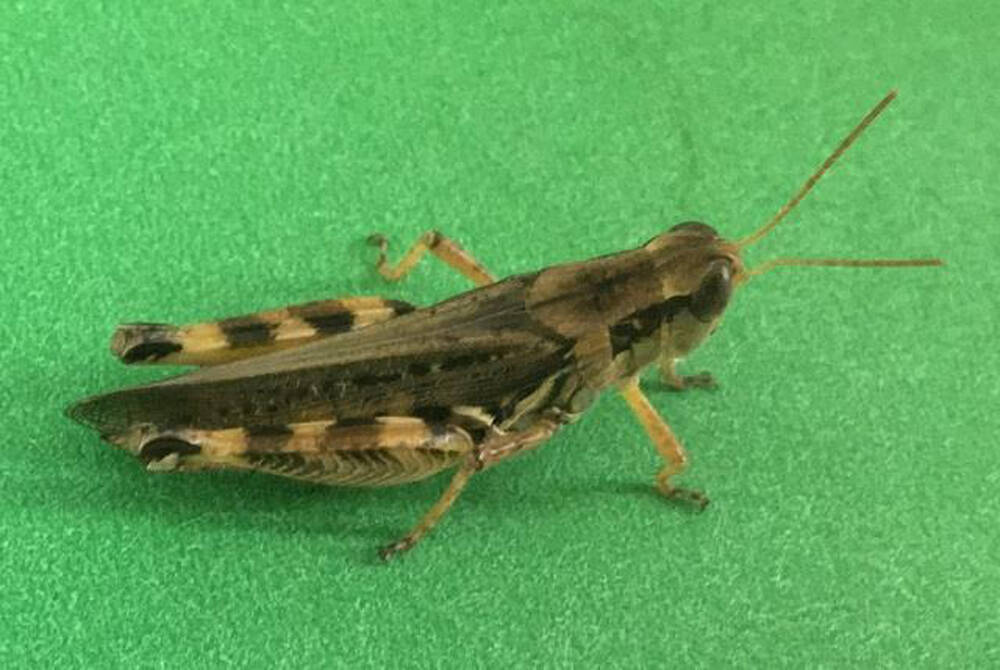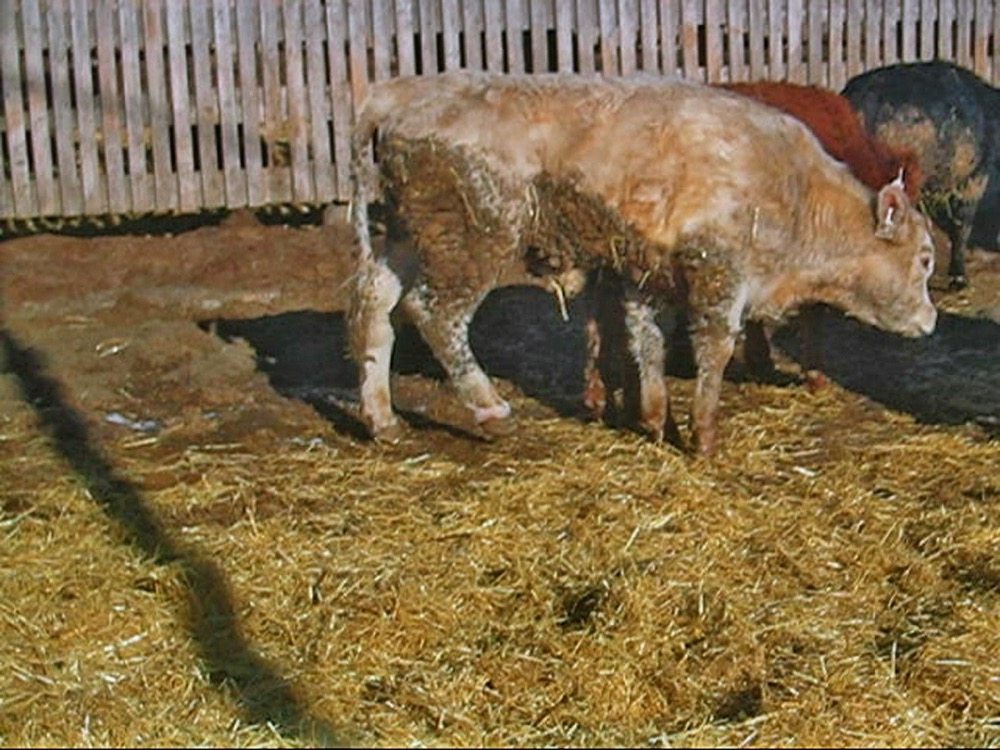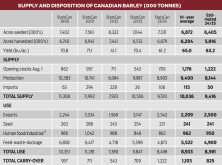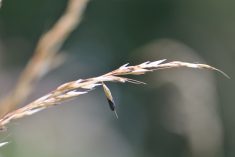Glacier FarmMedia – When I was first hired by Alberta Agriculture as a diagnostic plant pathologist, I was told I would be primarily responsible for barley, oat, wheat and canola diseases. I was also asked to head up the provincial control program for bacterial ring rot of potato. The bacterial ring rot program, run in partnership with the federal agriculture department in British Columbia, in itself is another huge success story.
Pretty soon, in the ’70s and ’80s, I was involved in controlling sclerotinia disease of canola, blackleg of canola, sulphur deficiency in canola and, later on, fusarium head blight in cereals. In conjunction with the late Phil Thomas, the canola specialist, we at Alberta Agriculture ran several highly successful disease control programs. The crop protection branch at Alberta Agriculture published fact sheets on these diseases, which are still available on the net, essentially fully relevant and currently almost abandoned by Alberta Agriculture.
This story started in the early ’80s, when we had outbreaks of a browning destructive disease of wheat. This distinct browning and a much-reduced yield were initially blamed on a bacterial disease, pseudomonas. This browning disease was most common on Park wheat, especially in wet summers. Lu Piening, a cereal research scientist at the Lacombe, Alta. federal research station, had several discussions with me on his views about this problem. He had previously done research on wheat diseases in the Aberdare mountains of west-central Kenya. In areas where wheat grew poorly, he said, they were treated with Bordeaux mixture — a mix of copper sulphate and slaked lime. This mixture, applied on the wheat seed, gave much better wheat yields than the untreated checks.
Read Also

What pests are bugging your forage crops?
Manitoba Agriculture entomologist John Gavloski highlights several key insect pests that can affect forage crop production and shares strategies for managing them.
In a sandy soil area near Lacombe, Piening set out plots of wheat, barley and oats on cropland that returned low yields and quality of these cereals, particularly wheat. The plots treated with copper chelate more than doubled the yield of all the wheats, and the browning of the wheat heads and lodging were absent. Some of the barleys and oats also responded very positively.
As a consequence of Piening’s work, Alberta Agriculture’s Edmonton crop science and soil science units actively initiated work on copper deficiency in the Edmonton area on cropland that produced unexpectedly low yields of wheat and barley.
In the meantime, we found that Robin Graham and colleagues in Australia had published a full review of copper deficiency in Australia and its occurrence worldwide in 1981. Despite Graham’s research, Canadian soil scientists, as well as those in the U.S., were for the most part very skeptical of any soil copper deficiency influencing cereal yields. On sandy, peaty and peat soils in general in Alberta, we found huge yield responses to soil or foliar copper amendments, particularly for wheat. Research in Manitoba on peat soils at five separate locations, published in 1990 by agronomist Ray Dowbenko, showed yield increases of 13 bushels of barley to 80 bushels, and at another location from three to 83 bushels per acre. By the late ’90s, Alberta Agriculture published a fact sheet, Copper Deficiency: Diagnosis and Correction (Agdex 532-3), and it is fully relevant today.
Farmers who crop land all across the Prairies and south of the border have had incredible yield and quality increase when they have identified copper deficiencies. Unfortunately, we still have many influential skeptics who refuse to even understand this problem.
How does ergot fit into the story?
When we ran field plot trials in the Stony Plain area of Alberta, one of our technologists, Lloyd Davidson, told us that while the check wheat samples in the yield trials had lots of ergots, they were few or absent from the copper-amended wheat plots. We checked all of the harvested grain samples from the copper-treated and equivalent check plots, and sure enough, there were few or no ergots in those wheat trial samples.
Ergot infection as a consequence of copper deficiency was something that the world had missed. Australian, British and French researchers had previously shown copper deficiency caused pollen sterility, but they failed to equate it with ergot infection.
Agriculture Canada and the Western Grains Research Foundation had spent millions of dollars looking for resistance in wheat to ergot. The answer was simply pollen sterility in wheat, barley and oats, brought about by copper deficiency that caused unpollinated female flowers to open and become infected with ergot or, alternatively, stray grain pollen. Ergot in a field of wheat is a sure sign of cross-pollination as well, since the flowers are also open to stray viable pollen that can travel for miles.
In Quebec and in Finland (1981), it has been shown that severe boron deficiency can also result in ergot infection in barley and wheat, due to pollen tube failure from a severe lack of boron. Soil boron levels in Quebec were 0.1 parts per million.
As an epilogue, there were no bells and whistles when we proved conclusively the relationship between copper deficiency and ergot infection in wheat, barley and oats. Identifying copper deficiency as a cause of ergot infection had worldwide implications. Just remember the incredible answer came from the Canadian Prairies and the accolades were non-existent.
Consequences of copper deficiency
Despite a few prominent soil scientist skeptics out there, several of whom have retired recently, copper nutrition plays a major role in Prairie agriculture. Back some 70 to 100 years ago, wheat yields were 25 bushels per acre, and barley perhaps 40 bushels per acre. A soil level of copper at 0.5 parts per million (ppm) in the top six inches (15 cm), equivalent to one pound per acre of copper, could well have been adequate. Every crop removed for grain or hayland would remove perhaps a half ounce (15 grams) of available copper or less. Sandy, sandy loam or sandy silt soils may have had less than one to two pounds of available copper in the top six inches. Over the years they would become copper-depleted. Peat soils or peaty loam soils also tie up or sequester available copper, making it unavailable to the crop, resulting in lodged, low-yielding, low-quality cereal crops.
With expectations of 70- to 100-bushel yields of wheat or 120 bushels of barley, soil copper levels should be at least 1.5 to 2.5 ppm. Such levels would be good for many years since copper does not leach in cropland. It has been recently estimated copper-deficient soils may be as much as 30 per cent of the acreage in Alberta, 10 per cent in Saskatchewan and 15 per cent in Manitoba.
Copper for cattle
In many areas of Prairie Canada, we have had significant problems with copper deficiency in cattle. Animal nutritionists and veterinarians are now fully recognizing the role of this vital element in the animal’s life cycle.
A few points:
- The blood of slugs and snails, as well as of oysters, octopus and squid, is copper-based. They live and breathe copper.
- Copper is not a heavy metal such as gold or lead, but rather a ferrous bio-essential mineral. Look at the list on your multivitamin bottle.
- Rye and wild grasses, and to some extent triticale, are open-pollinated and invariably end up with some degree of ergot infection — and it’s not copper-related.
If you come across any individual who states that ergot in wheat and barley is caused by wet weather and prolonged flowering, I hope you ask for the source and proof.
At Bradford Marsh — black peatland, north of Toronto — horticultural growers apply 150 pounds of bluestone (copper sulphate) at 25 per cent actual copper per acre to bring the land into full production.
My final message to all Prairie farmers who grow cereals, particularly wheat: the appearance of ergot in your harvested crop is like the proverbial canary in the coal mine. It indicates you have a minor or perhaps major problem with copper deficiency that could result in very significant crop losses in both yield and quality.
Please let this statement stick in your mind: Copper sufficiency completely — yes, completely — eliminates ergot in wheat, barley and oats. Don’t let the naysayers confuse you with their opinions; just stick to facts.
Copper in crops: Talking points
- Copper deficiency, in wheat and barley, results in minor to major ergot infection.
- Sterile pollen, in both wheat and barley, results in blanks and loss of yields.
- Ergot in seed wheat or barley is a sure sign that cross-pollination will have taken place, affecting grain quality or purity.
- Ergots must be cleared out of infected grains.
- Severe lodging is a consequence of copper deficiency since copper-based enzymes are responsible for stem strength — that is, stem lignification — in all cereals.
- Low copper soil levels result in delayed crop maturity of up to 10-15 days.
- Grass quality in copper-deficient soils makes for inferior cattle grades.
- Yield losses in copper-deficient wheat fields in Alberta can be as much as 50-60 per cent of expected yield or more, and the grain will be of inferior quality.
- Heavy manuring, especially on light or sandy soils low in copper, can create a major copper deficiency since the soil microflora have first dibs on the low copper levels, resulting in copper deficiency and very poor crop stem strength and severe crop lodging. Some say it’s an excess of nitrogen; that’s just nonsense.
- Peatland will not produce a crop of wheat or barley until it’s treated with a “heavy” copper application.
- Certain Group 1 wild oat herbicides can severely affect uptake of copper on copper-deficient soils. Have you seen spray wheel lines in wheat fields? Can you figure this out?
- In very wet summers, cereals will have very shallow rooting in the top six inches (15 cm). This copper-deficient zone can result in severe crop lodging. In dry summers, little or no lodging results, since the cereal roots can move two to four feet into the subsoil where there is adequate copper. So, a wheat field may lodge one year, but not the next, depending on rainfall. That confuses soil scientists.
– Ieuan Evans is a forensic plant pathologist based in Edmonton, Alta. He can be reached at [email protected].
















